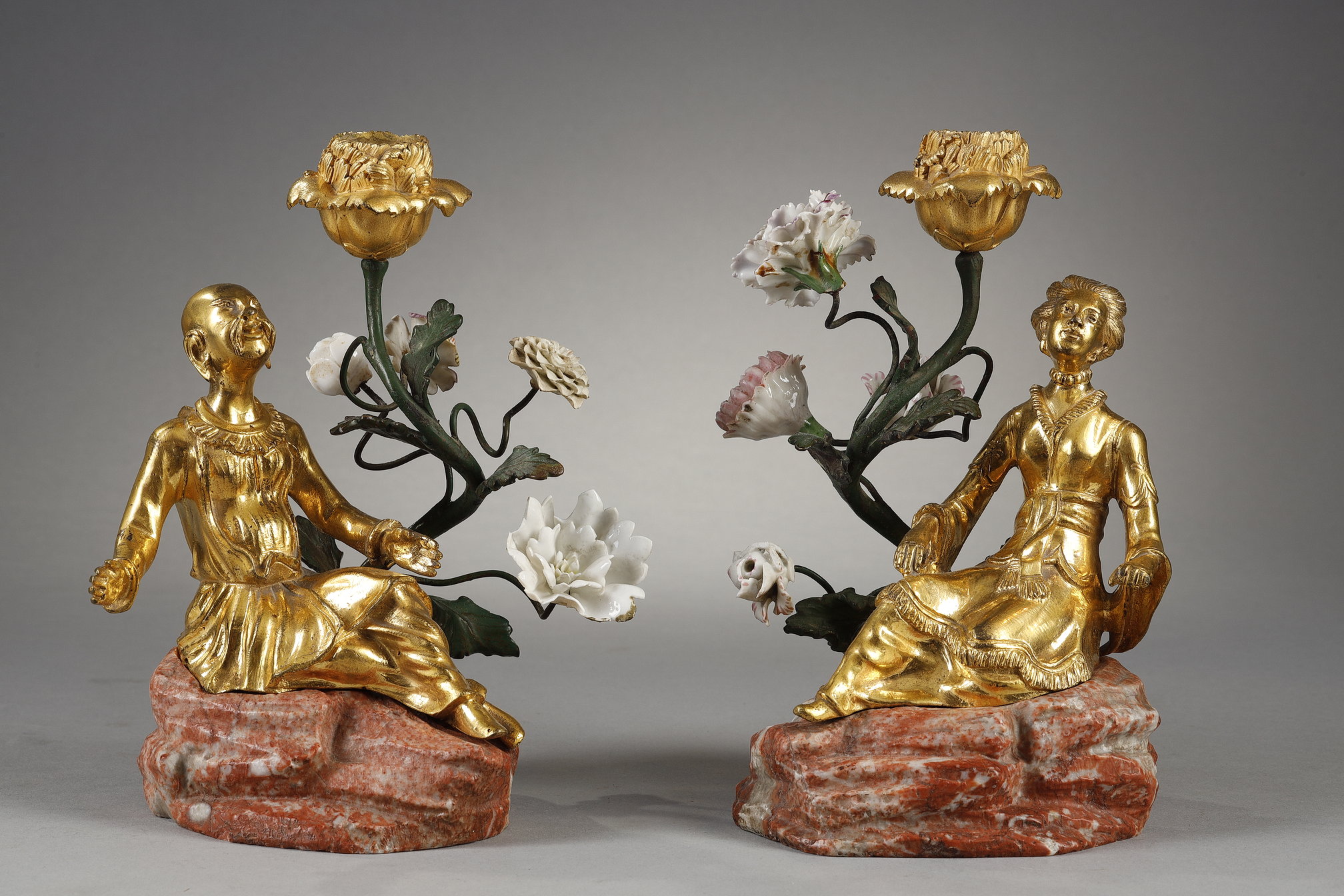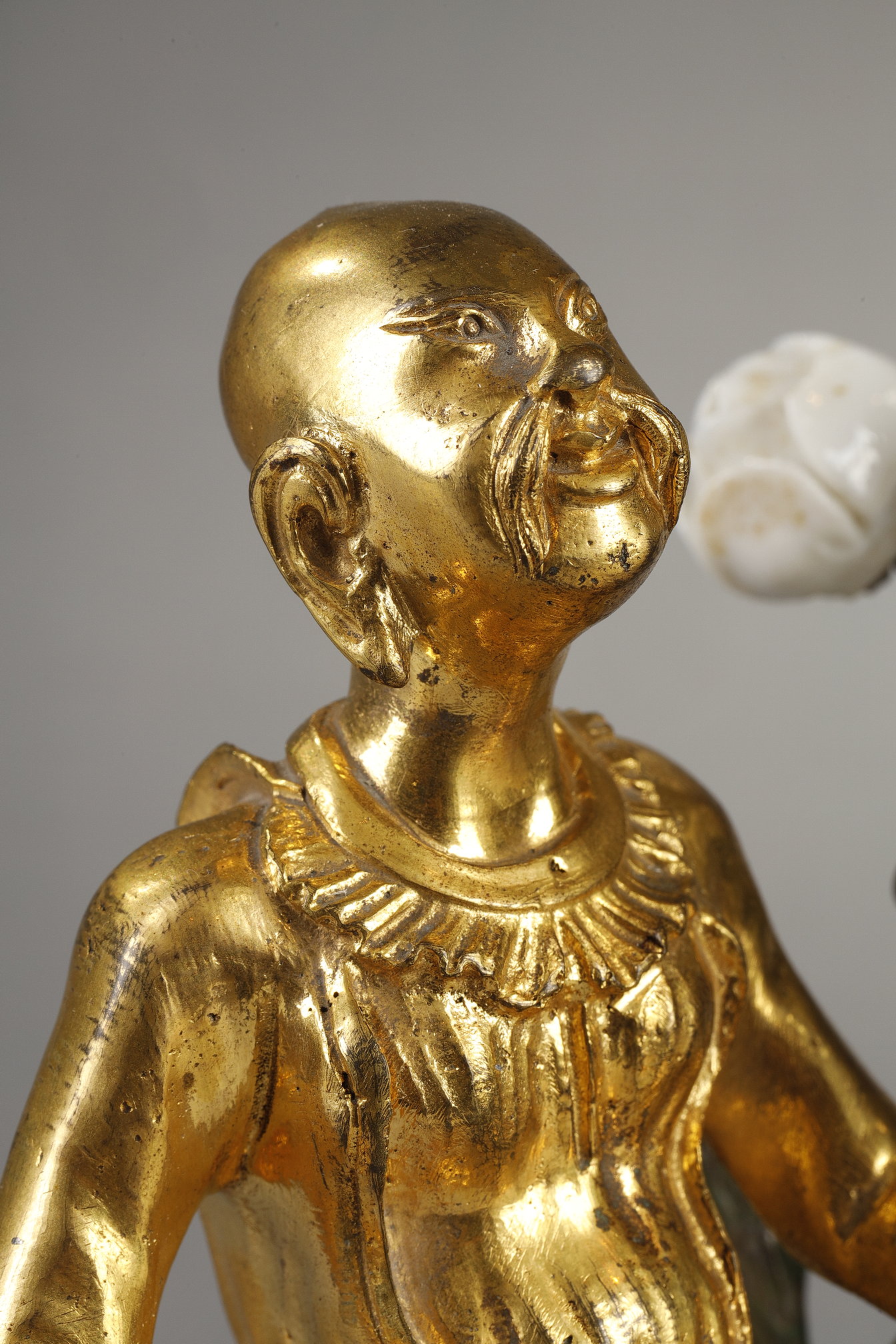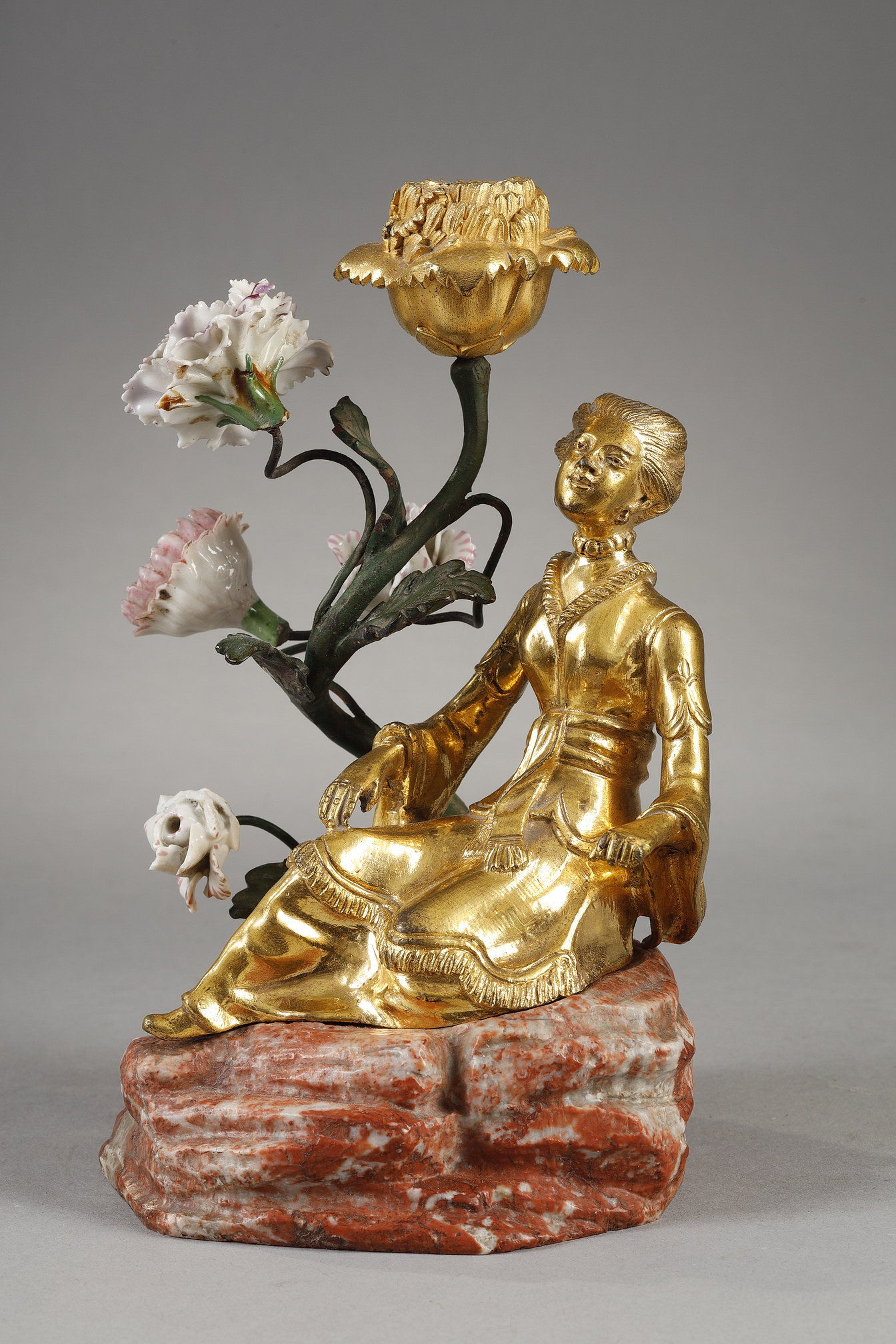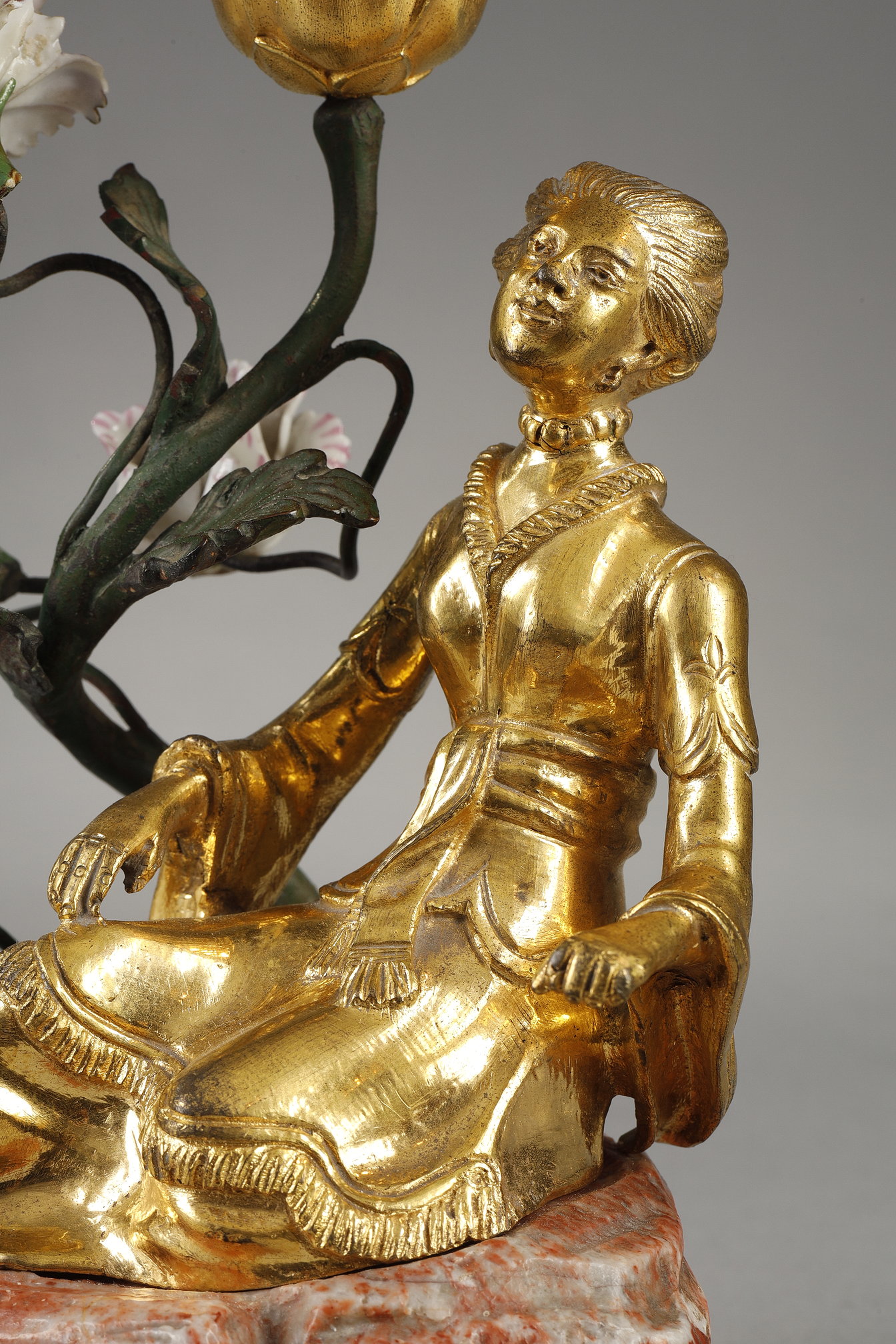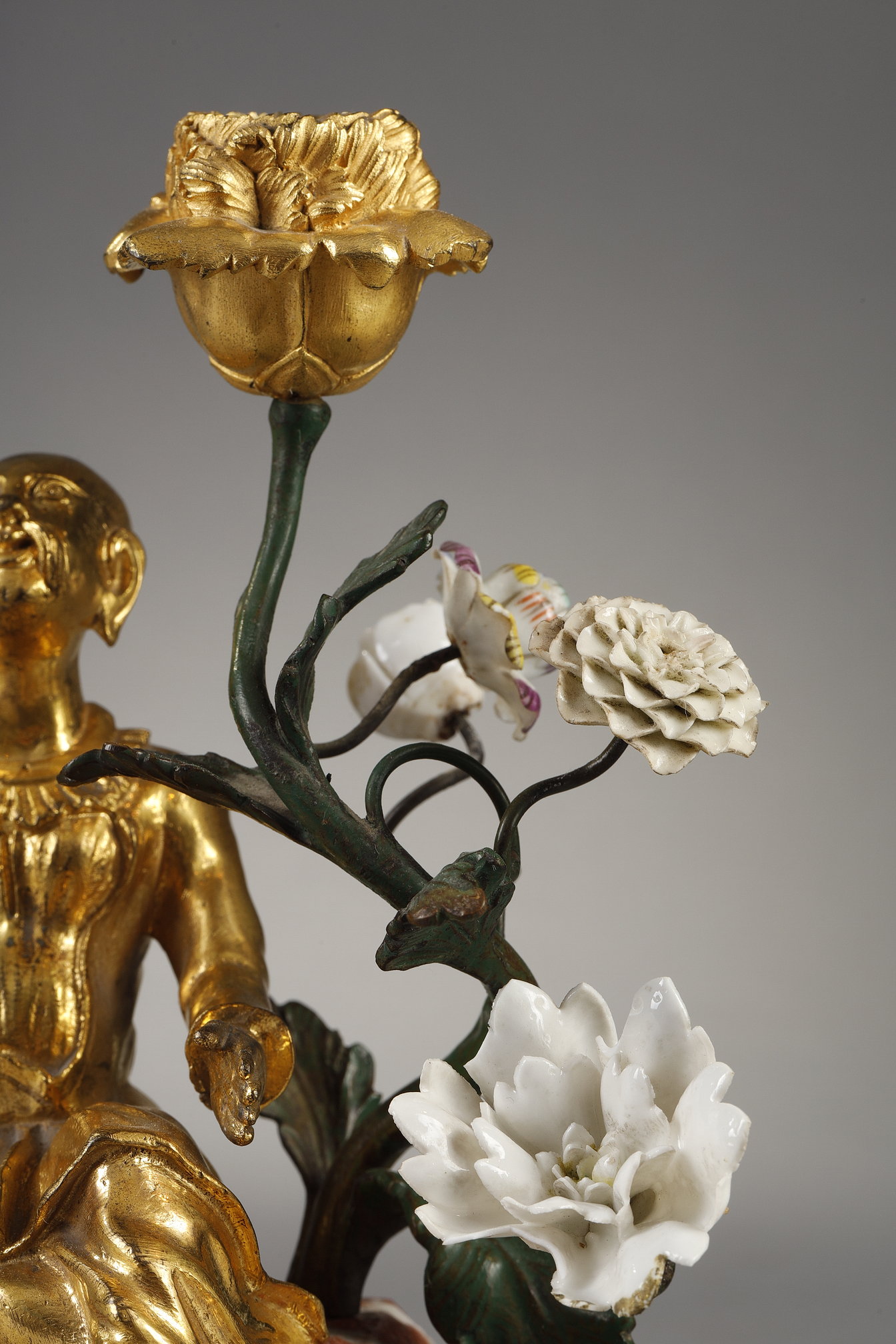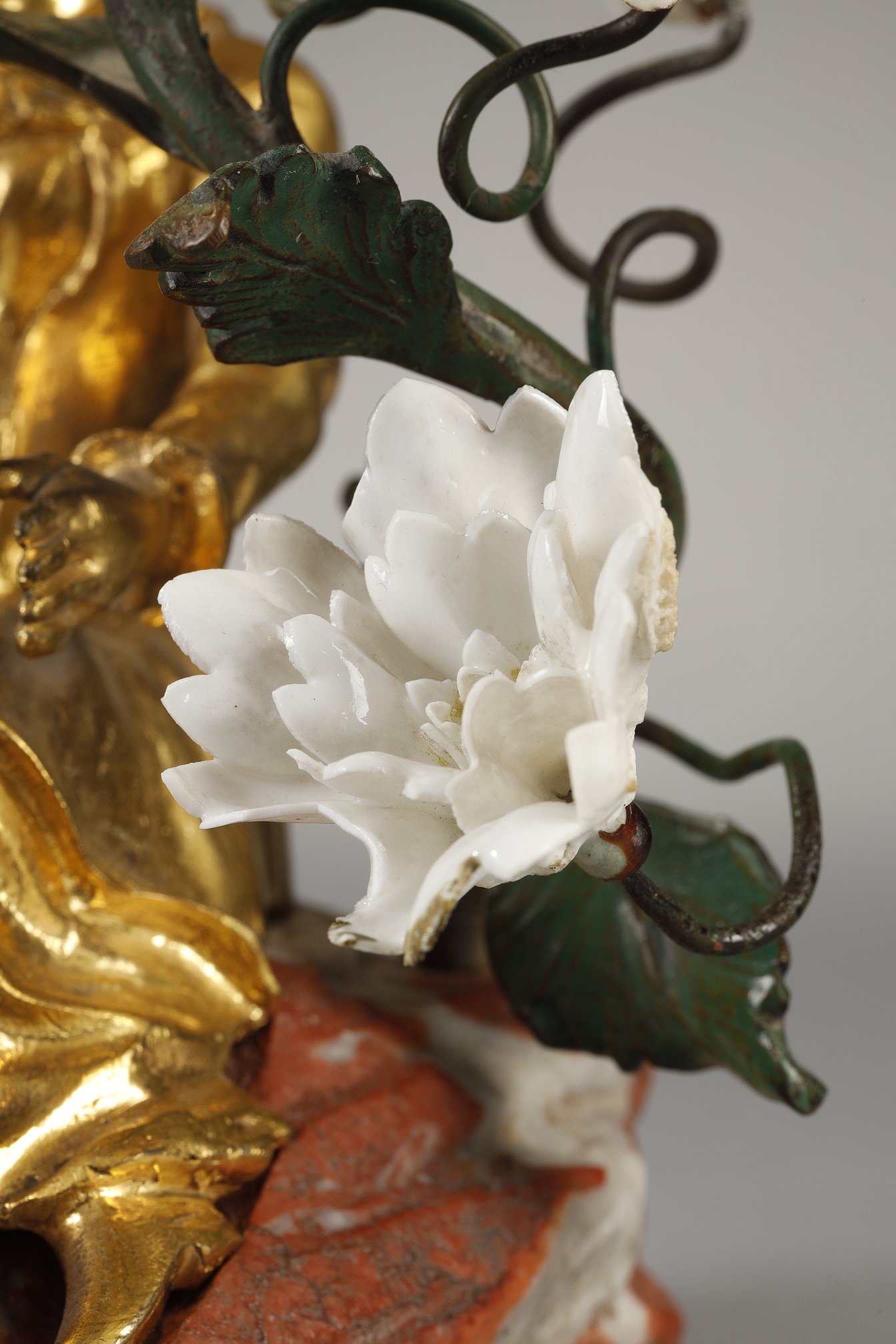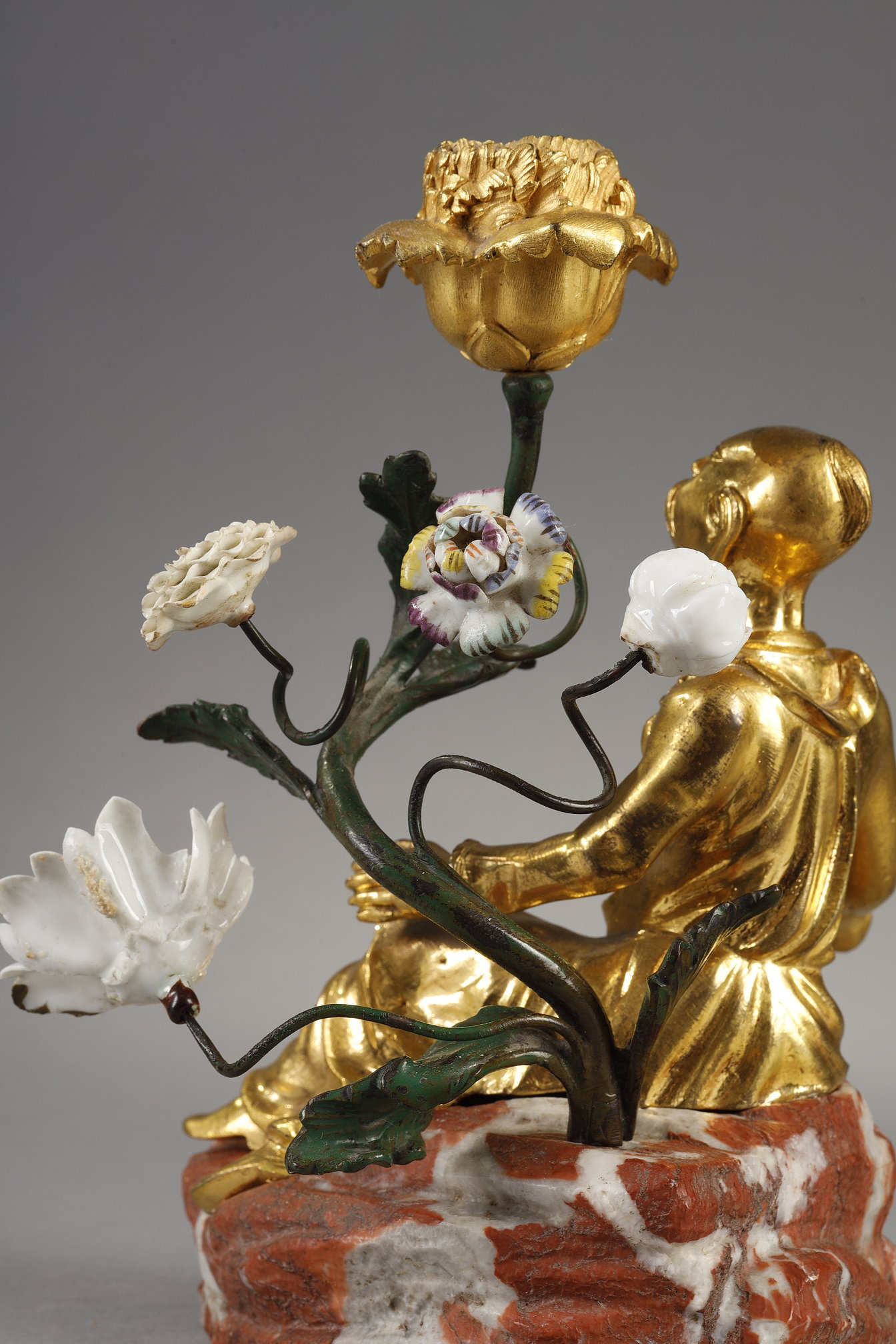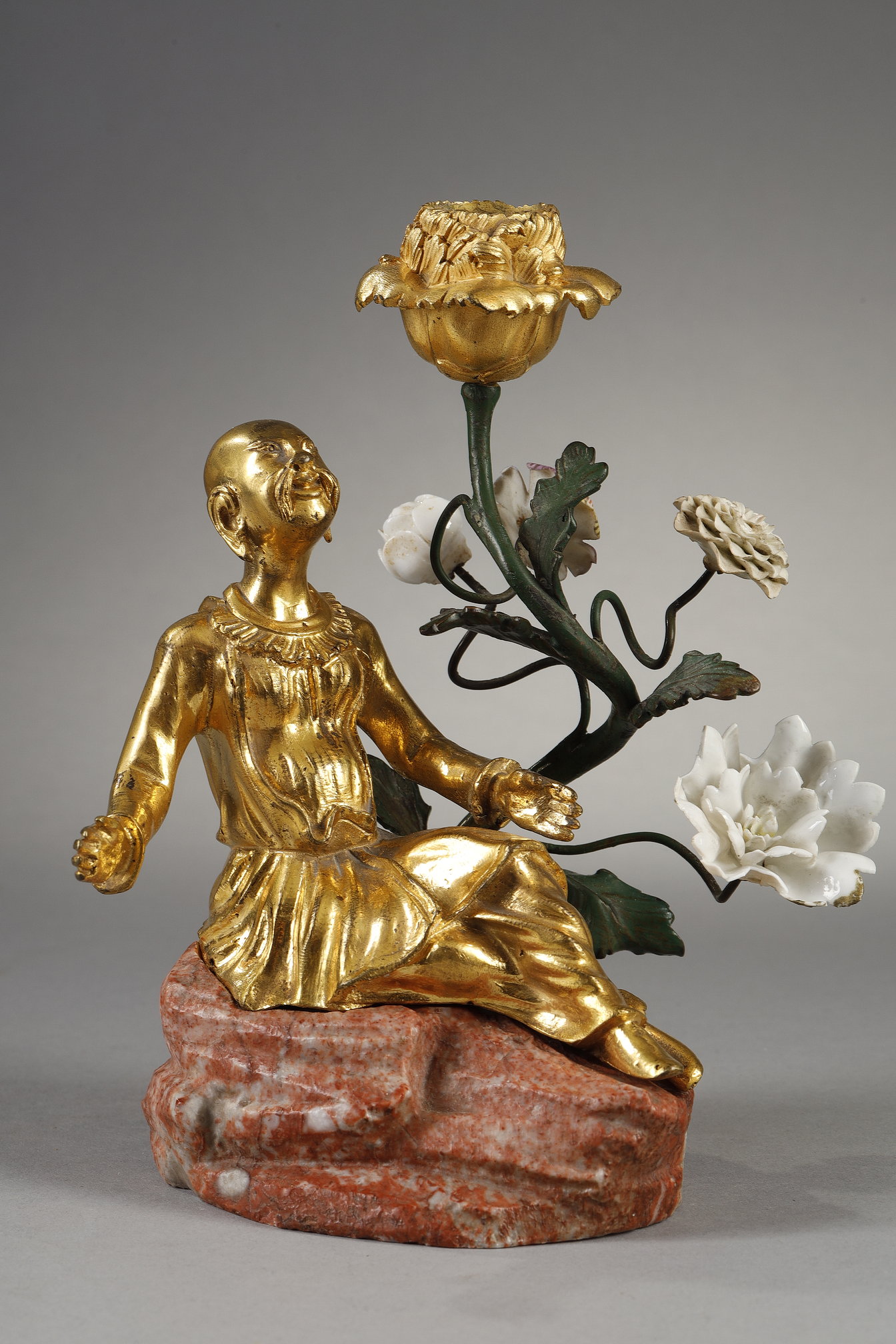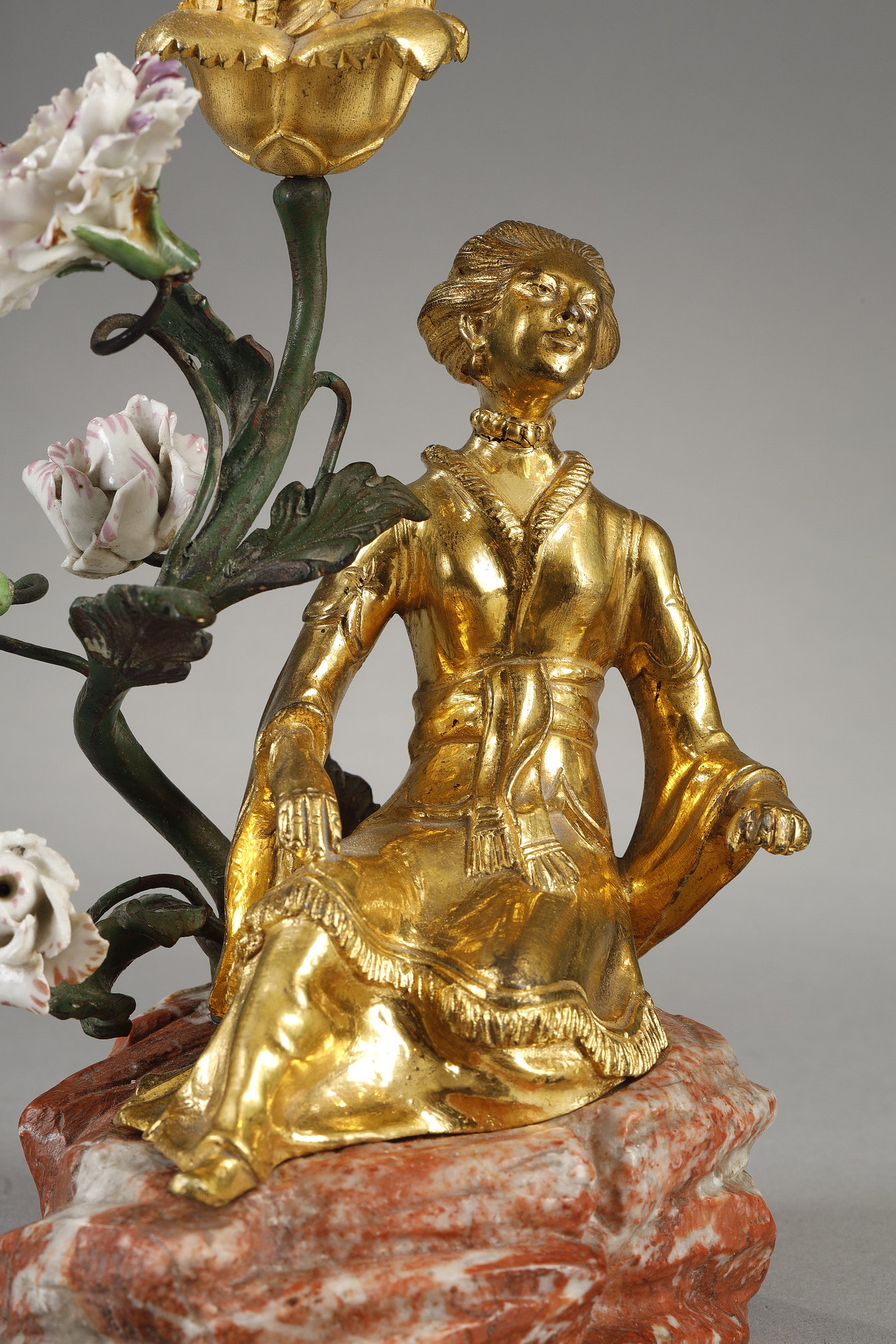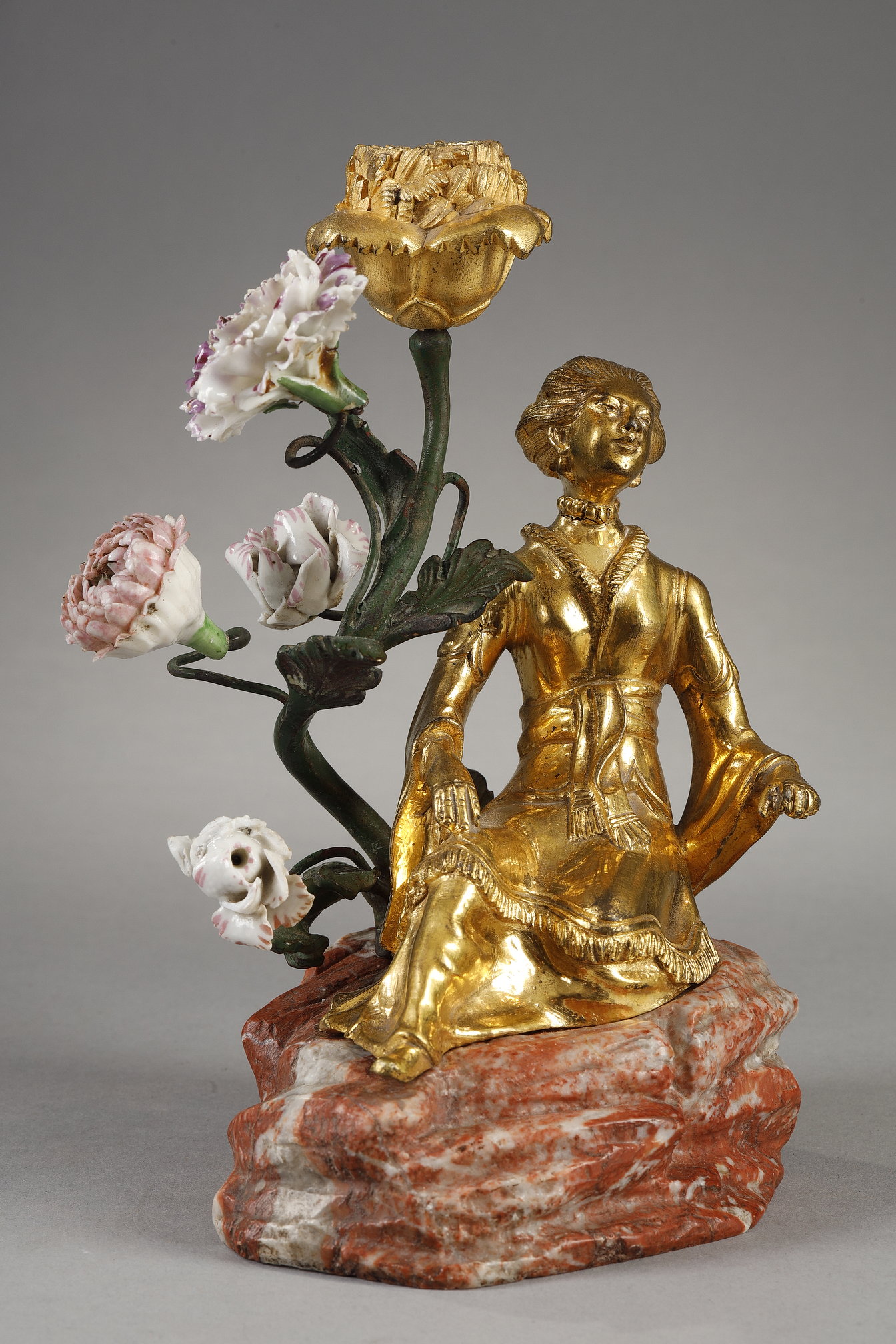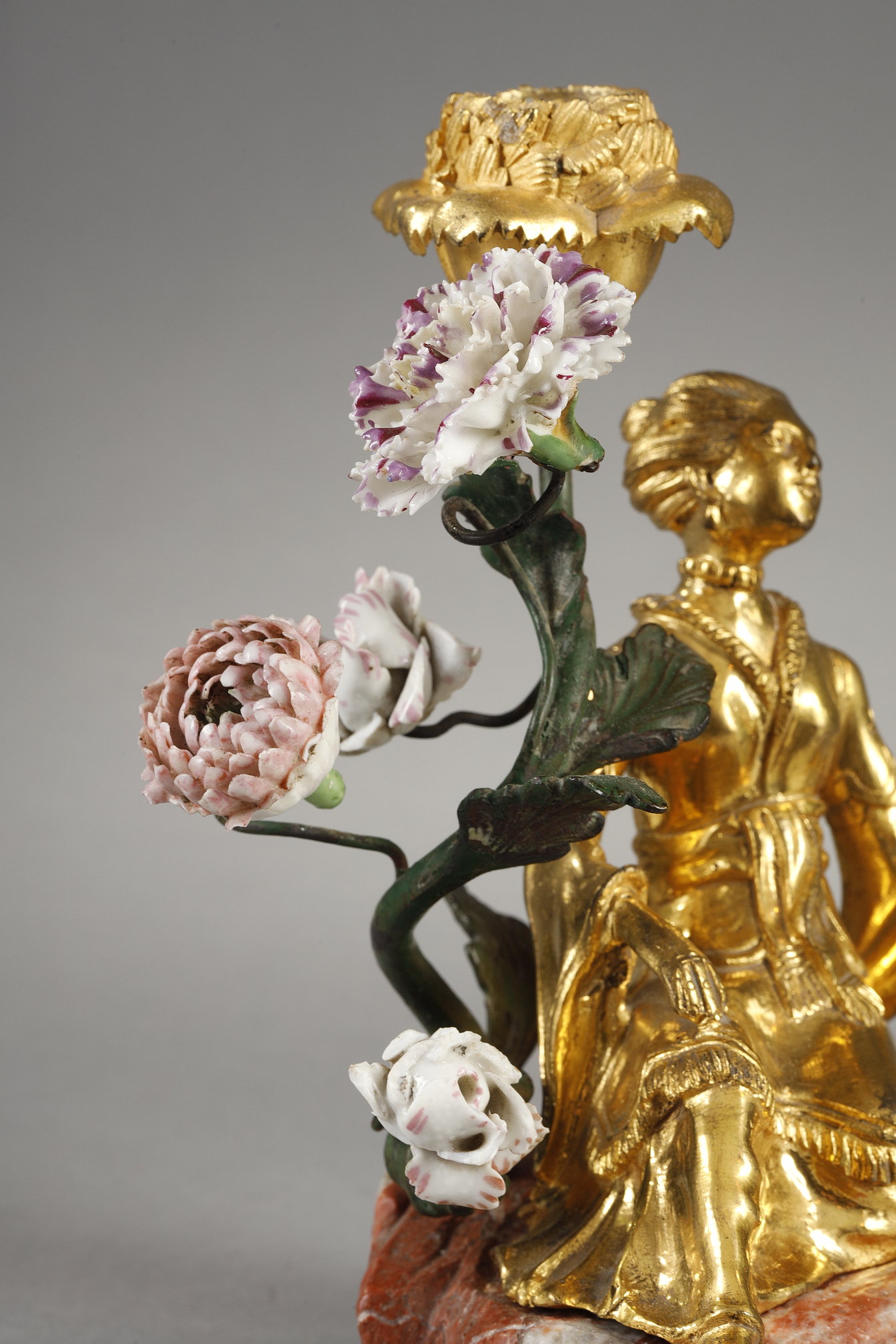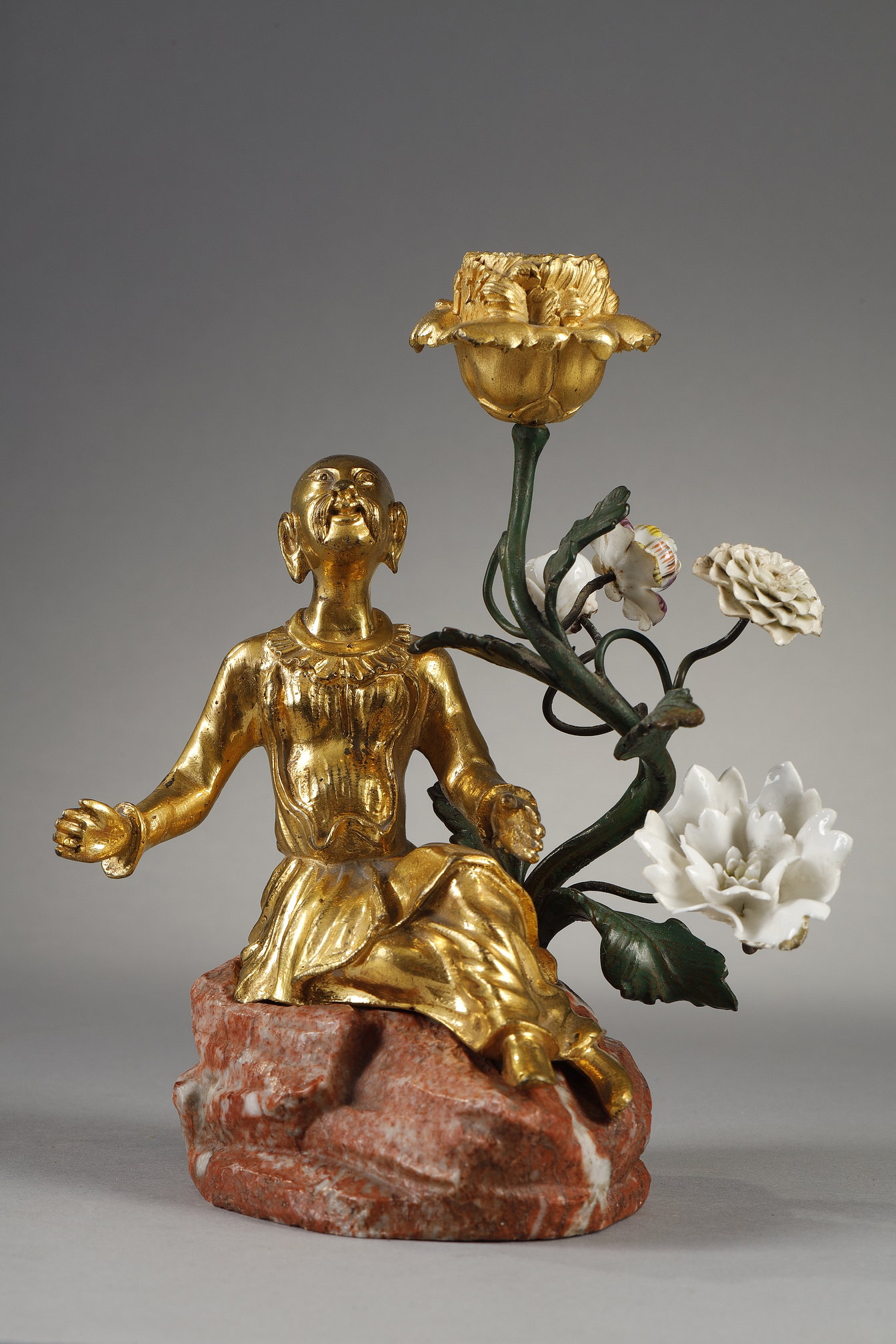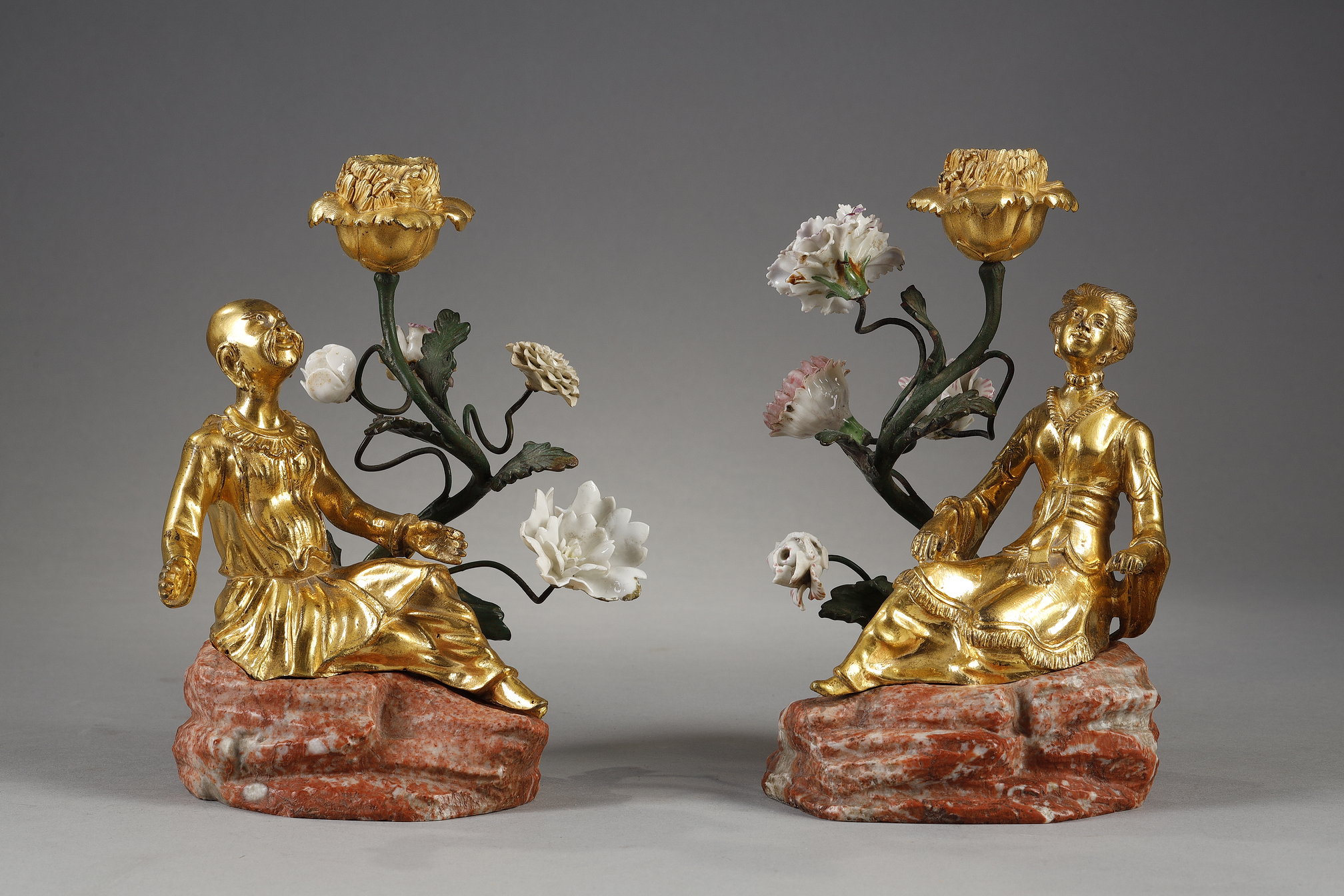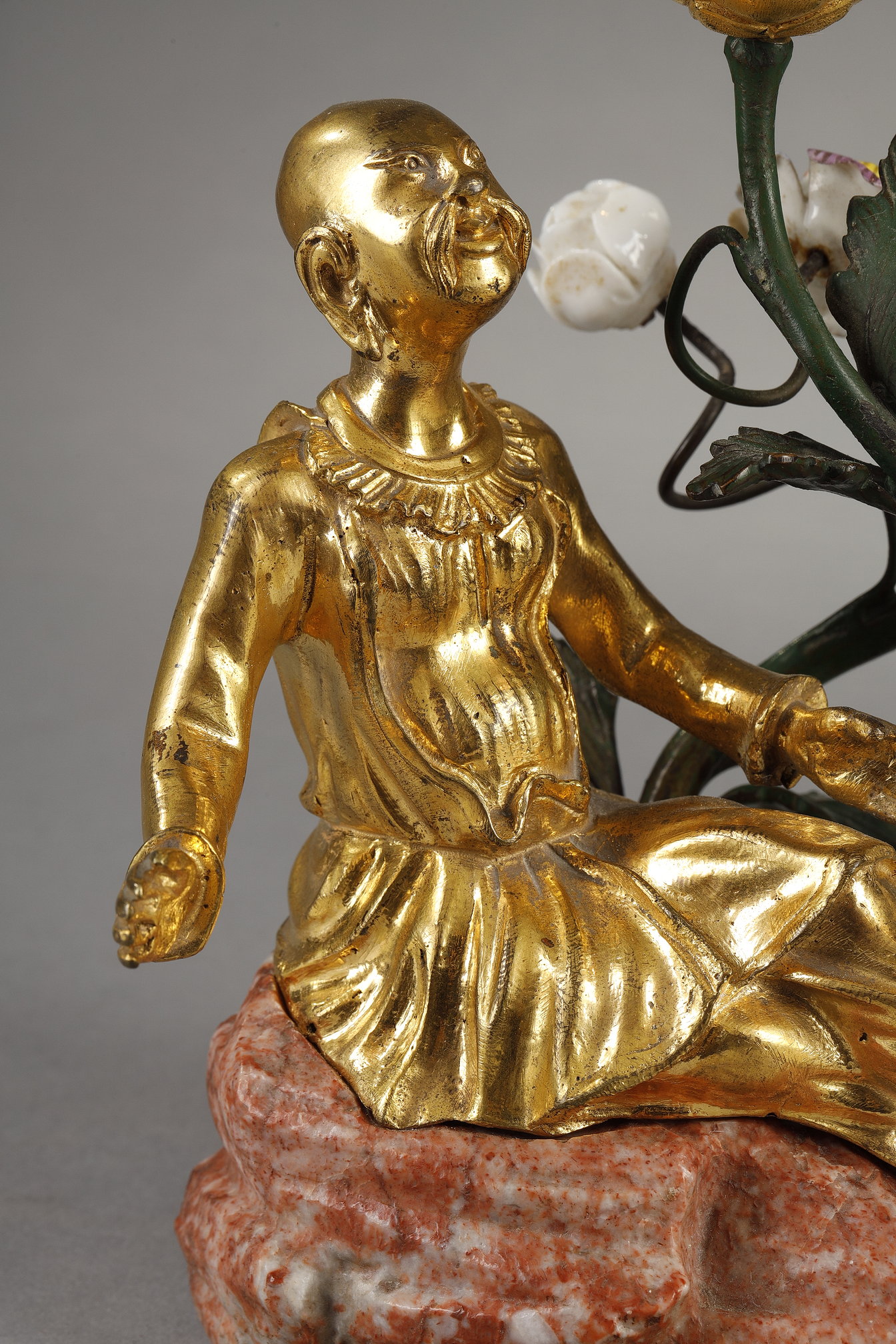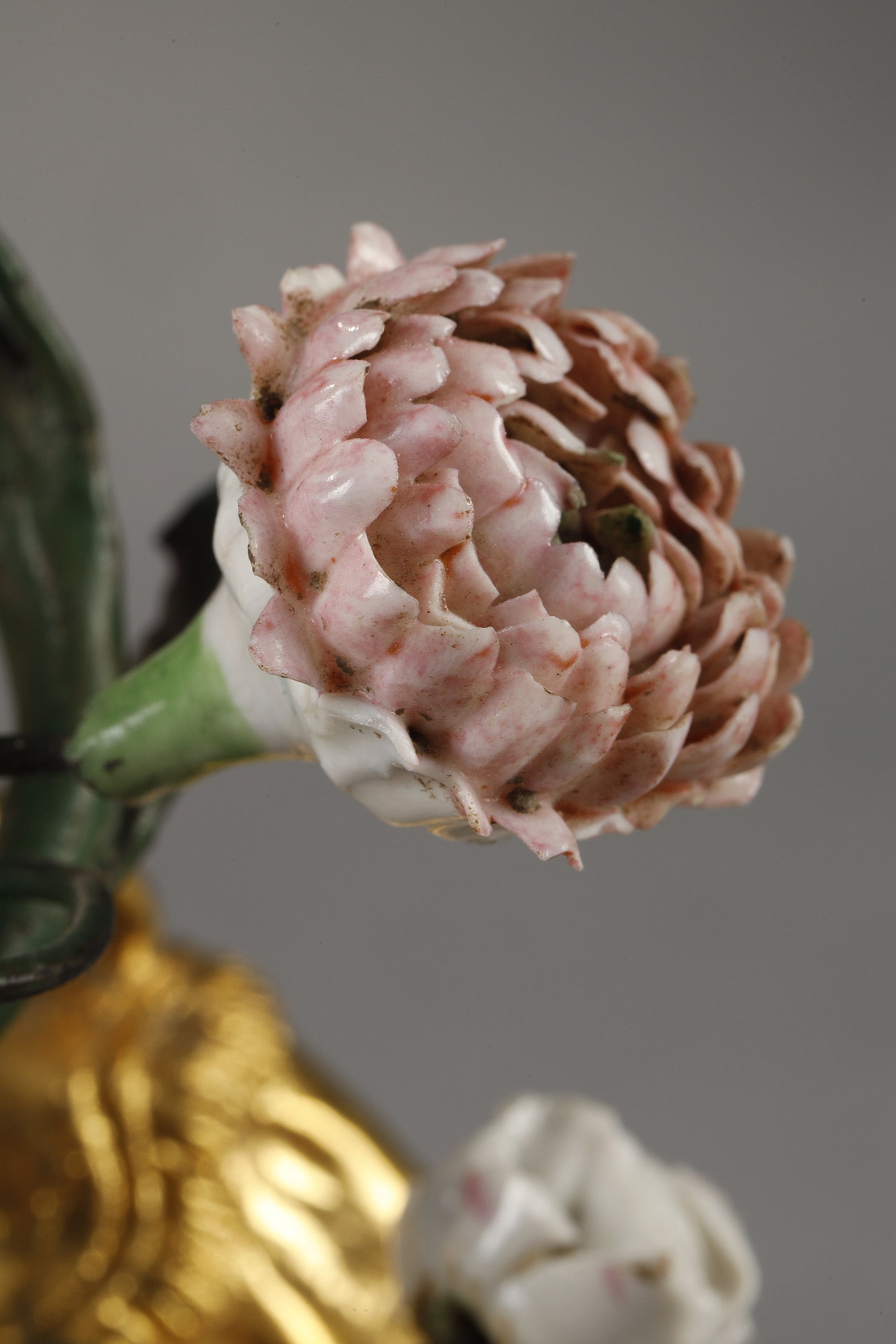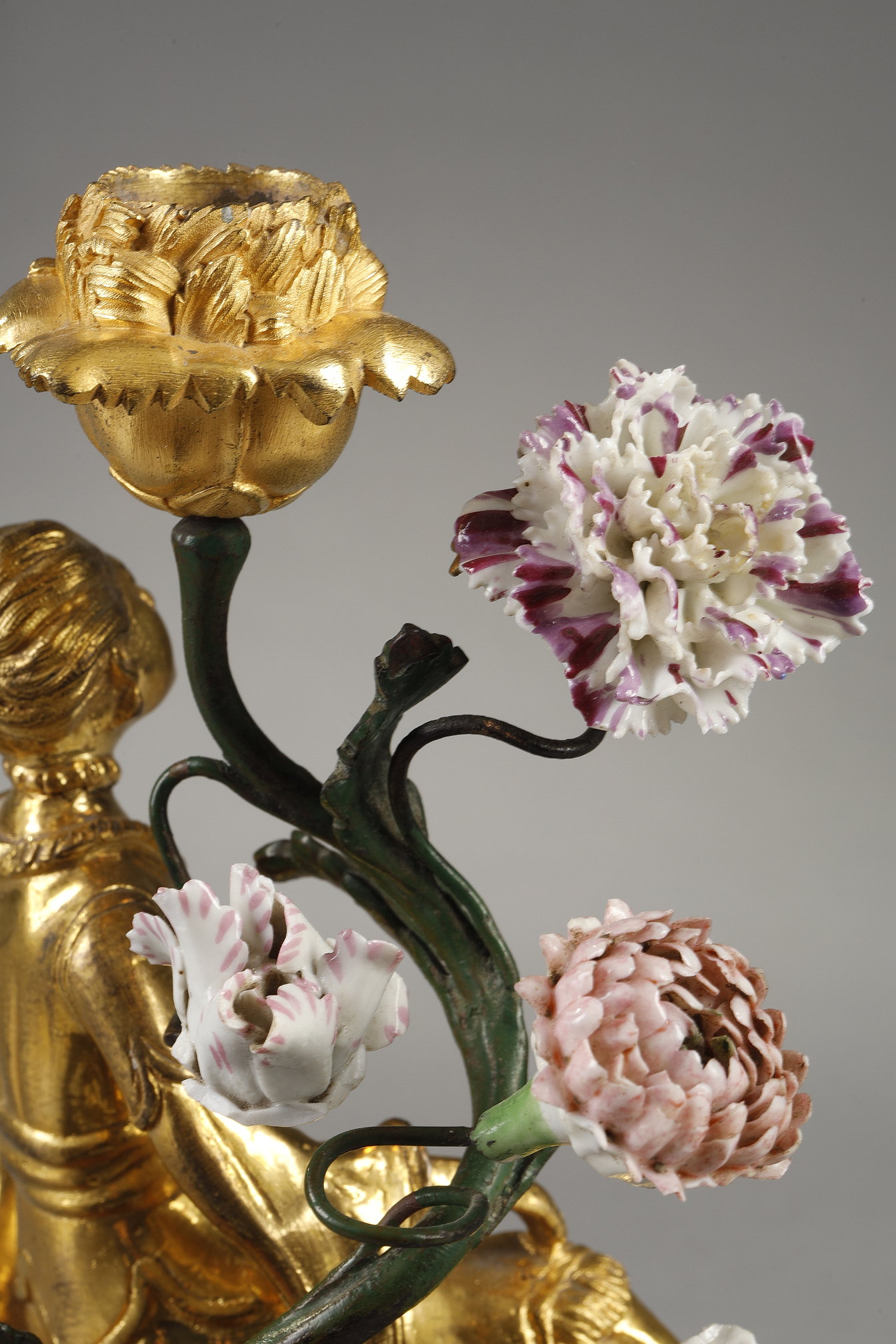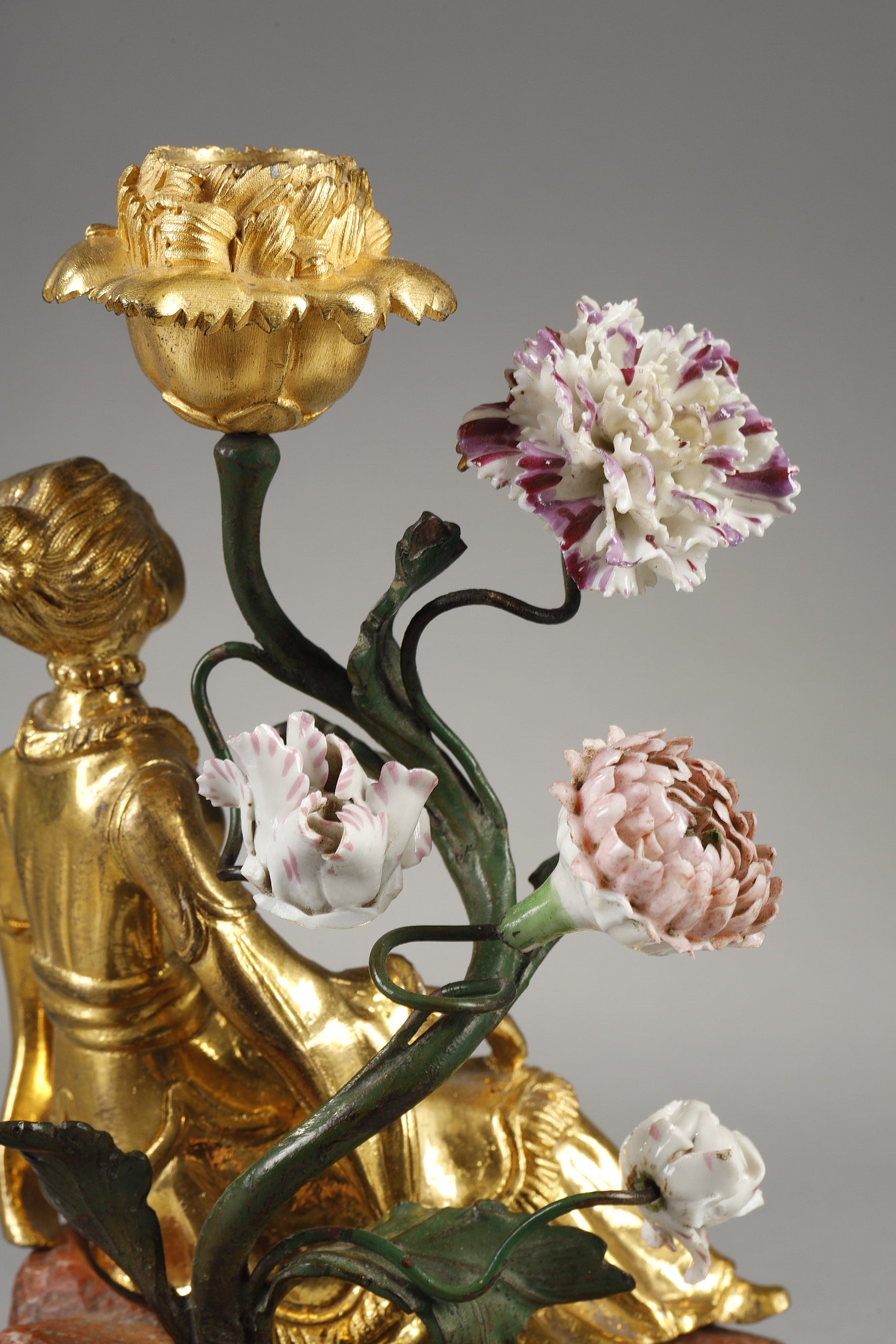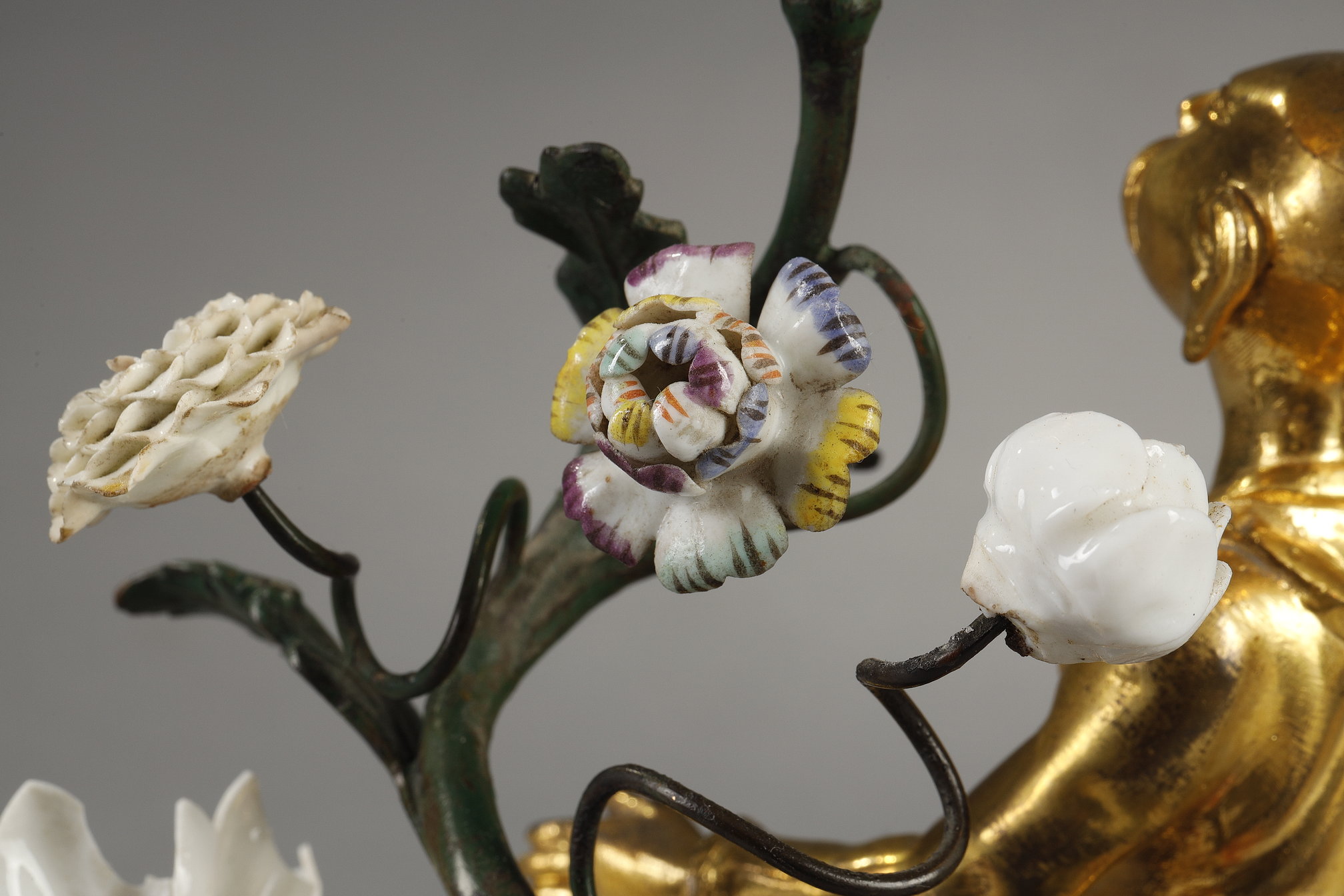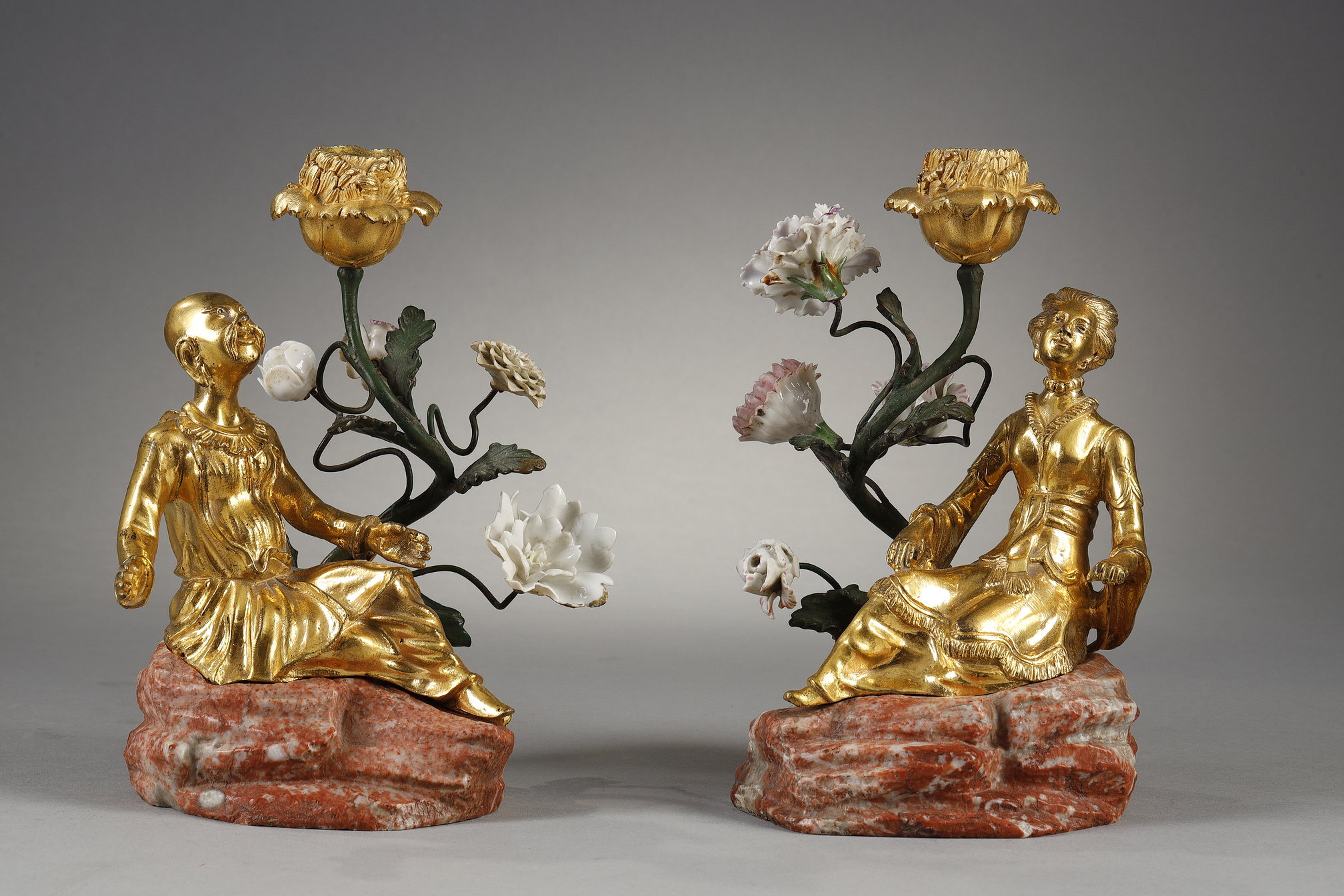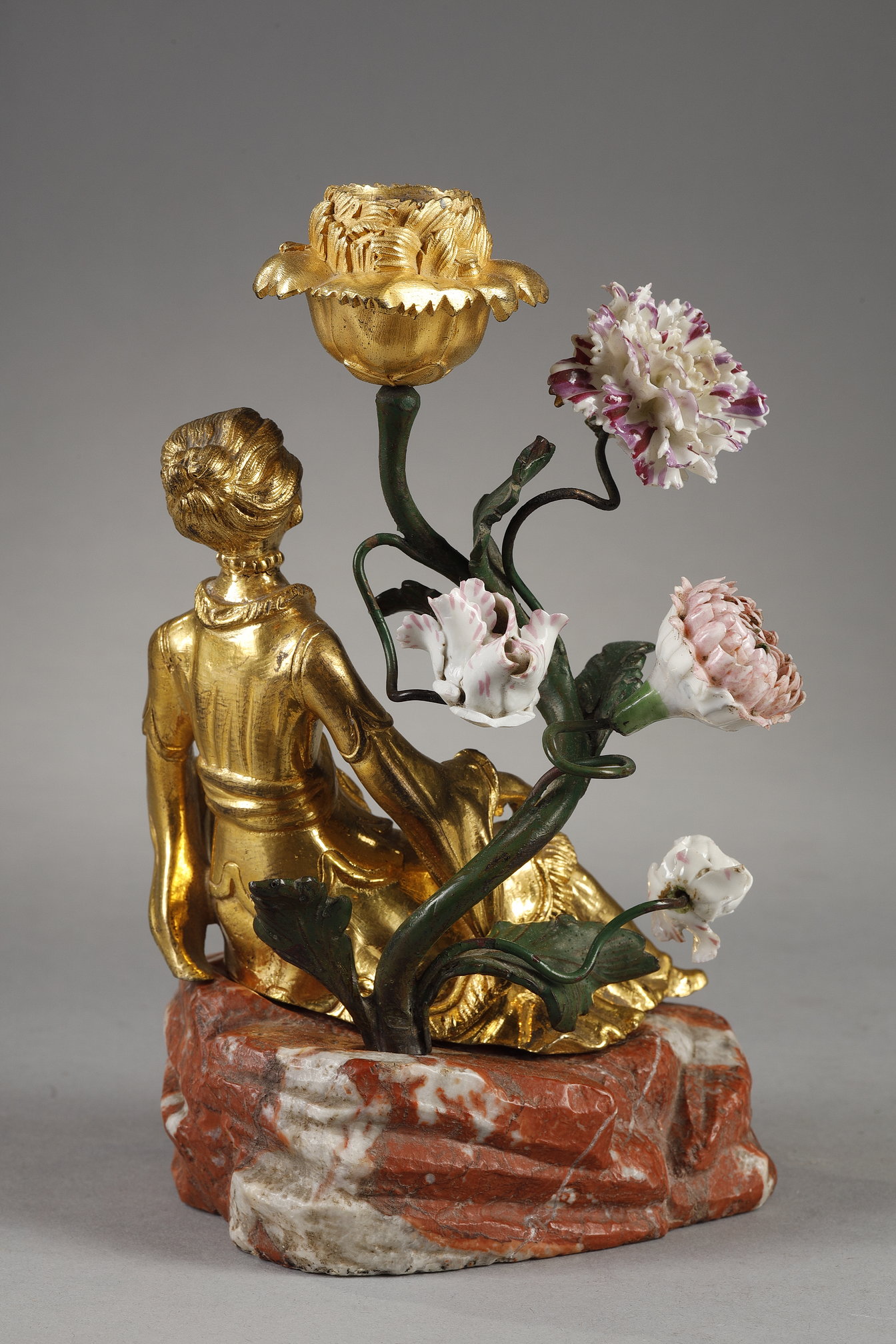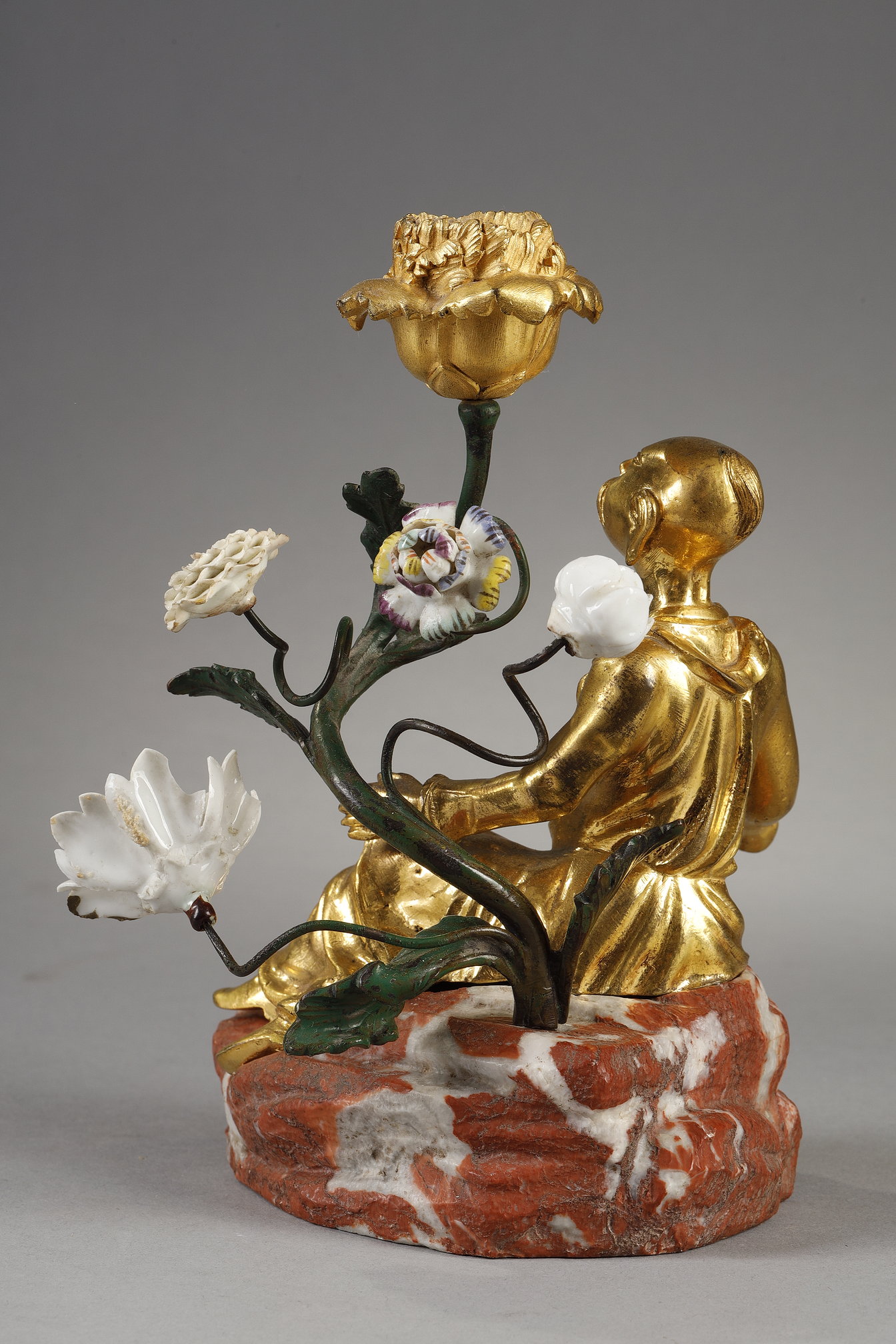Description
Pair of so-called “magots” torches
in gilded bronze and porcelain
Pair of so-called “magots” candlesticks representing Chinese characters and porcelain flowers, Parisian work from the Louis XV period.
This Chinese couple in gilded bronze sits in a welcoming position, each on their red Royal marble rock of Languedoc, with open arms and crossed legs.
They are dressed in traditional Chinese clothing from the 18th century.
The man with a shaved head and stretched earlobes has a long mustache. He seems to be wearing a sort of « Pien-fu », this tunic reaching to the knees and overlaid with pants (or a skirt) reaching down to the ankles (it can also be the « Hanfu » which presents itself in a similar form although the latter is characterized by looser sleeves and was prohibited under the Qing Dynasty), we can also assume that it is an idealized Manchu tunic whose sleeves were tighter.
The woman’s costume seems focused on the same specificities. She wears a toga reaching down to the knees, ending in frills and trimmed at the fur collar, the sleeves wider than the man’s and an imposing belt at the waist, often characteristic of Pien-fu. She stands gracefully wearing a bun, her head slightly tilted and presents a necklace of large pearls around her neck symbolizing importance in the hierarchy.
The two characters seem happy, smiling, their heads raised to the sky.
Behind them stands like a tree, a floral composition raised by stems, of which four flowers in white and colored porcelain contrast with their binet, at the top, in gilded bronze, illustrated by a peony.
This style of “chinoiserie” was very fashionable in the 18th century, particularly under Louis XV. François Boucher (1703-17770) was particularly influenced by the taste for Chinese art and integrated many Asian elements into his motifs. He took part in the creation of numerous profile drawings of the Beauvais factory for the creation of a Chinese hanging in 1745. He depicted very smiling Asian characters, with elongated earlobes like Buddha, with togas imitating Asian fashion , with shaved heads and mustaches for men, but headdresses and European jewelry for women. This style of reinterpretation of Asian life, although very fanciful, sought to capture an idealized vision of Chinese culture, without dwelling on ethnographic precision, which particularly appealed to the French royal court.
François Boucher was very successful with this Asian reinterpretation and his drawings were widely disseminated through the engravings of Gabriel Huguier, a model which was taken up by the bronze workers of the 18th century.
Our couple is a model that can be found with certain variations. However, it stands out for its quality of carving and the use of porcelain.The 18th century gilded bronze figures were mounted in the 19th century on a beautiful royal red Languedoc marble base sculpted to imitate the rock.
This pair of candlesticks is a precious example of the artistic dialogue between East and West in the 18th century. It testifies to the taste for Chinoiserie and the art of porcelain, as well as the ability of European artisans to interpret and integrate foreign aesthetic elements into a truly Western style.
Dimensions H 20 cm x D 12 cm

